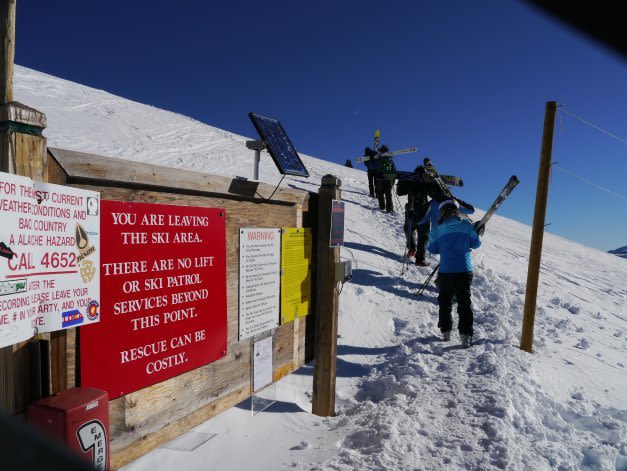Footprints In The Snow

Today, I walked in the footsteps of Tony Seibert.
I never met Tony, but last season, my first in Vail, I spent a half-day touring the Back Bowls with his father, Pete “Circle” Seibert, Jr.; it was a humbling experience. Circle skis much the way Paul Maclean, the hero of A River Runs Through It, casts a fly rod. As an artist on snow, Tony long ago eclipsed his father. Google “Tony Seibert Tribute,” and you’ll see what I mean.
I was at my desk in Avon at 11:57 on the morning of January 7 when a text message from the Eagle County Public Safety Network pinged my cell phone: “Responders Needed for East Vail Avalanche.” As a support-level member of Vail Mountain Rescue Group, I’m a first responder. But I’m also a volunteer, and on this day work came first. A couple of hours later, I opened an e-mail from my brother in Chicago, who sent a link to a Denver Post news story—“Grandson of Vail Founder Killed, 3 Injured in Eagle County Avalanche”—and a message: “You’ve probably already seen this, but I wanted to check that you were OK.” I hadn’t. And I wasn’t.
It’s hard to explain why, but I desperately regretted not being there.
All that week, I followed the newspaper reports; the accident happened in the same “sidecountry” terrain where eight have died in the past three decades, and where, on December 22, three skiers triggered an avalanche that buried one up to his nose. I also read the letters to the editor, including one that suggested embellishing signage at the resort’s backcountry gates with photos and details of accident victims who had passed through them, in an effort to interrupt the cycle of young skiers dying in the same places.
So today, just after the lifts started running, I rode the Riva Bahn to the Highline Express to the Sourdough Express, then dropped into the Back Bowls and rode the Orient Express to the top of Siberia Bowl. I had finished my forty-five-minute pilgrimage, topping out at the Mongolia T-bar lift, ahead of the crowds. Just beyond the lift shack, at the highest point in the Back Bowls, I stared up at a backcountry gate, and beyond that, the summit of Benchmark, a vast dome of alpine white with a solitary trail of footsteps leading up it. The signage at the gate couldn’t have been more explicit—“AVALANCHE DANGER,” “YOU ASSUME THE RISK OF INJURY OR DEATH,” “NO SKI PATROL SERVICES OR RESCUE BEYOND THIS POINT”—a billboard in the wilderness accessorized with a bright red emergency phone and a solar-powered testing station for avalanche beacons.
I stood there for perhaps fifteen minutes before they started coming.
First, four snowboarders. Then two skiers, and eight more, including a couple with a child, a girl of perhaps 10. Nobody so much as glanced at the warnings. So I followed the crowd up to the summit and asked for a show of hands: “How many of you are wearing avalanche beacons?” None: the only survival tools they had were cell phones. “Who can tell me what the avalanche danger is back here today?” Nobody had checked the Colorado Avalanche Information Center’s online report or even bothered to dial the information number on the billboard. I told them the story of Tony Seibert, of how brilliantly he skied, and explained that he had died, barely two weeks earlier, in an avalanche just beyond the crest they were about to cross. The girl’s father asked which was the safest route back to the resort.
While the rest of the group continued on to the Chutes, the family, vacationers from the East Coast, skied down Benchmark into Siberia Bowl. And I followed the footsteps back to the billboard, where now, in addition to the official signage, there hangs a laminated page bearing the photograph of a grinning young man: “Anthony Pardee Seibert: 1989–2014.”






































